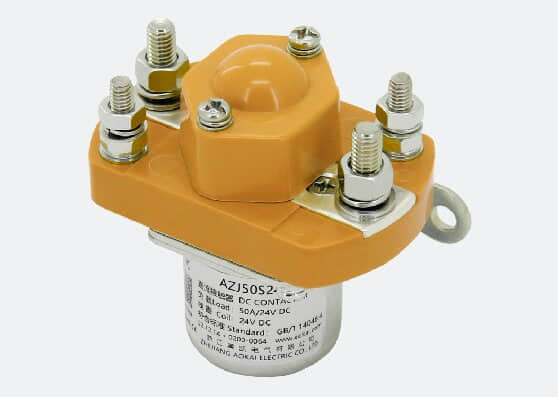- Home
- Product
- Solution
- About
- Download
- Glossary
- News
- Contact Us
- language

HVDC contactors: reliable guards for power systems
As power systems continue to evolve and demand for power grows, high-voltage direct current (HVDC) technology is becoming a key player in modern power transmission and distribution. In HVDC systems, high voltage DC contactors play a crucial role. In this paper, we will discuss in depth the importance, working principle and application of HVDC contactors in power systems.
Overview of HVDC system
HVDC technology is a technology used for long-distance power transmission, which reduces energy loss by converting electrical energy into direct current (DC) and transmitting it on transmission lines. Compared to alternating current (AC) transmission systems, HVDC systems offer higher transmission efficiency, lower energy losses, and better power control. This makes HVDC systems ideal for traveling across oceans, through mountain ranges, or connecting long distances.
The role of HVDC contactors
High voltage DC contactors play a key role in HVDC systems, similar to circuit breakers in AC systems. They are used to control and protect the current in an HVDC system, ensuring stable operation and shutting off the system when required. The following are the main functions of HVDC contactors:
1. Current control
HVDC contactors can control the flow of current by opening or closing the circuit. This is important for adjusting the current load of the system and maintaining voltage stability.
2. Fault Protection
When a fault or abnormal condition occurs in an HVDC system, the HVDC contactor can quickly shut down the circuit to prevent damage to electrical equipment. This helps to improve the reliability and peace of mind of the system.
3. System Isolation
During maintenance or emergency situations, HVDC contactors can isolate the system to ensure peace of mind for maintenance personnel and reduce potential electrical risks.
Principle of operation
HVDC contactors operate similarly to conventional AC circuit breakers, but they are required to meet the special challenges found in HVDC systems. They typically include the following key components:
1. Contacts
The main part of a HVDC contactor is a pair of movable electrical contacts that can be opened or closed by electromagnetic force or mechanical operation. These contacts must be able to withstand high voltages and currents.
2. Insulation
Due to the high voltage characteristics of HVDC systems, HVDC contactors need to have superior insulation to prevent arcing and discharging.
3. Control system
HVDC contactors are usually equipped with sophisticated control systems to monitor current, voltage and system status to ensure timely response to various conditions.
Application Areas
High voltage DC contactors have a wide range of applications in various power systems, including:
1. Long distance power transmission
HVDC systems are often used to connect power generating stations and consumer areas over long distances, and HVDC contactors ensure high-energy transmission of power in these systems.
2. Power interconnection
HVDC systems are also used to interconnect different women or regional power networks, and HVDC contactors help to ensure the coordinated operation of each network.
3. Renewable Energy Integration
In renewable energy projects, such as wind and solar farms, HVDC contactors are used to integrate the generated power into the main power network.
4. Industrial applications
HVDC contactors are also useful in industrial applications such as electric arc furnaces, electrochemical processes and high voltage power supplies.
Conclusion
HV DC contactors are integral components of modern power systems and they play a vital role in ensuring reliability, peace of mind and efficiency of power systems. As the demand for electricity continues to grow and HVDC technology continues to evolve, HVDC contactors will continue to play the role of a reliable guardian of the power system, providing a stable and sustainable supply of electricity for our lives and industrial activities.
